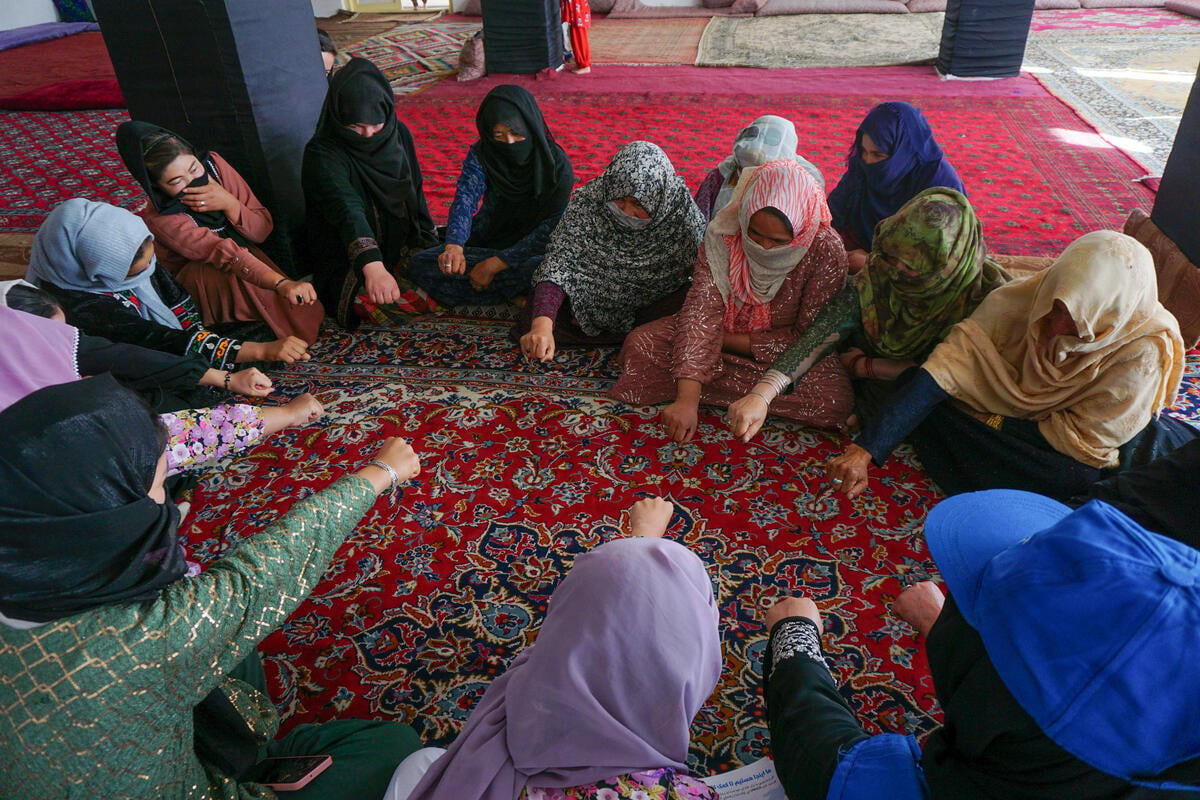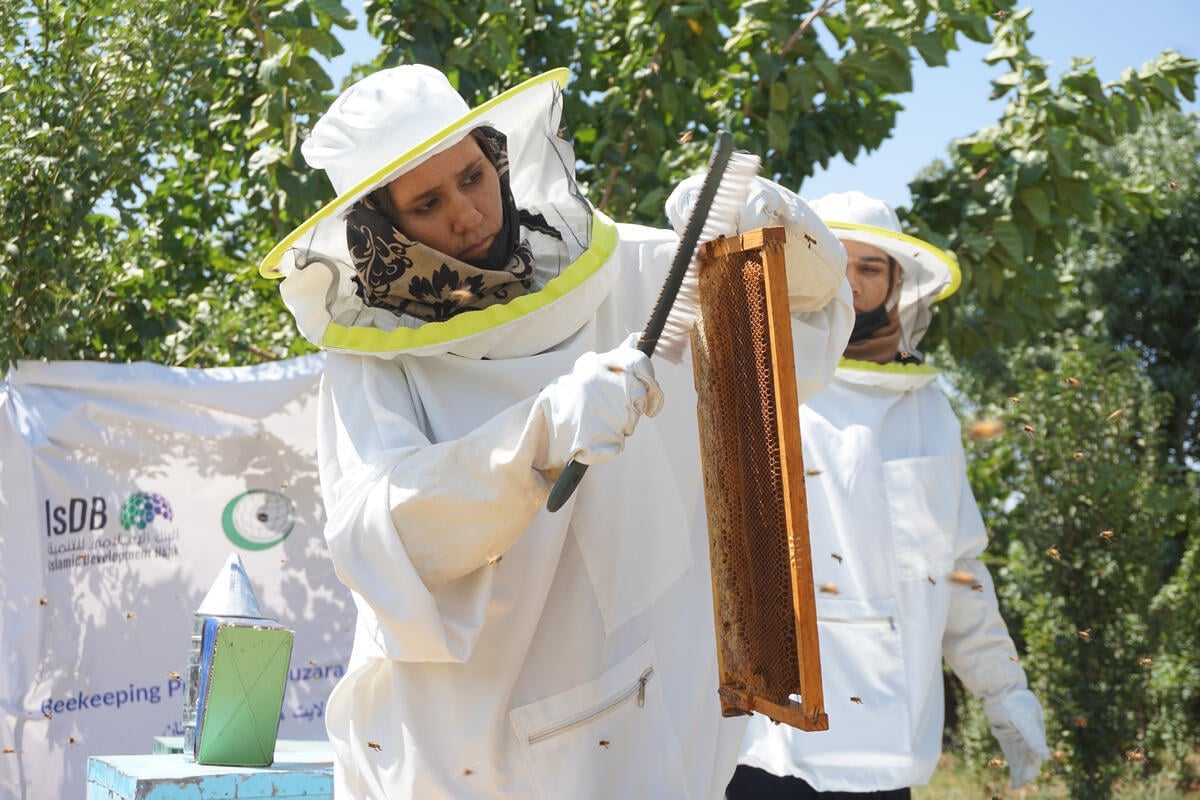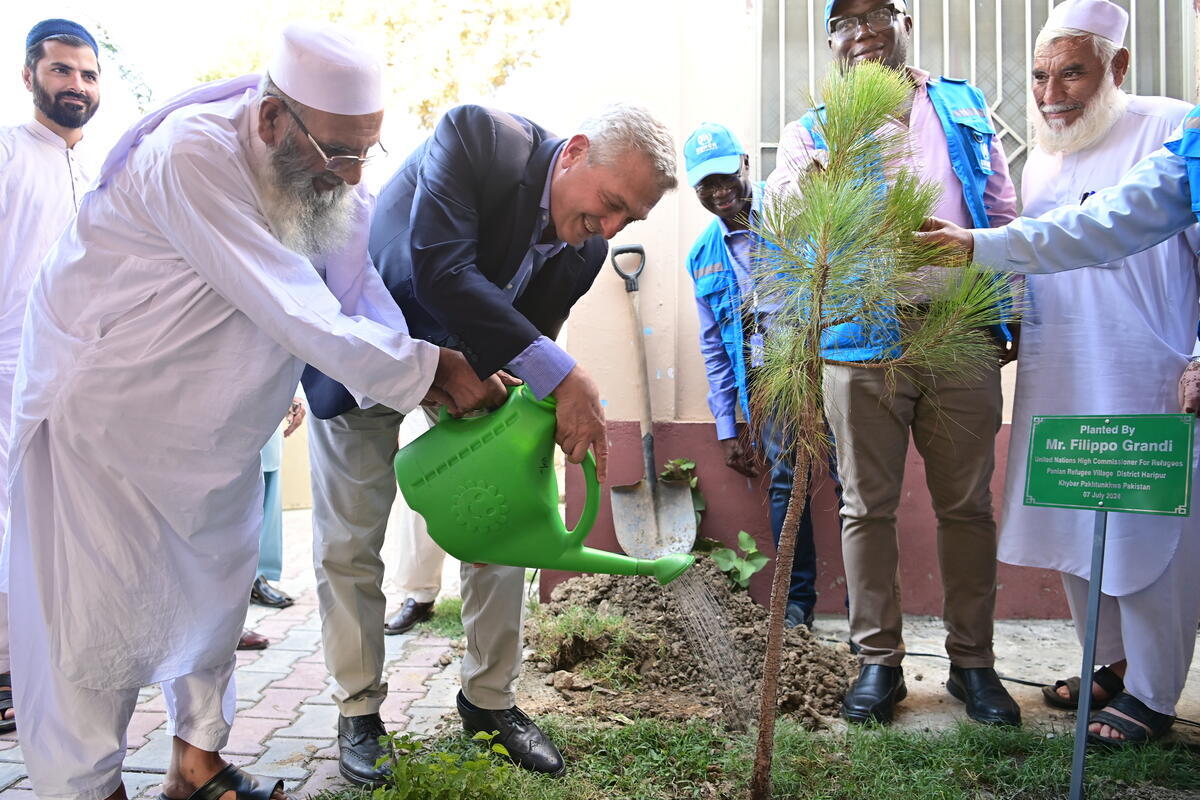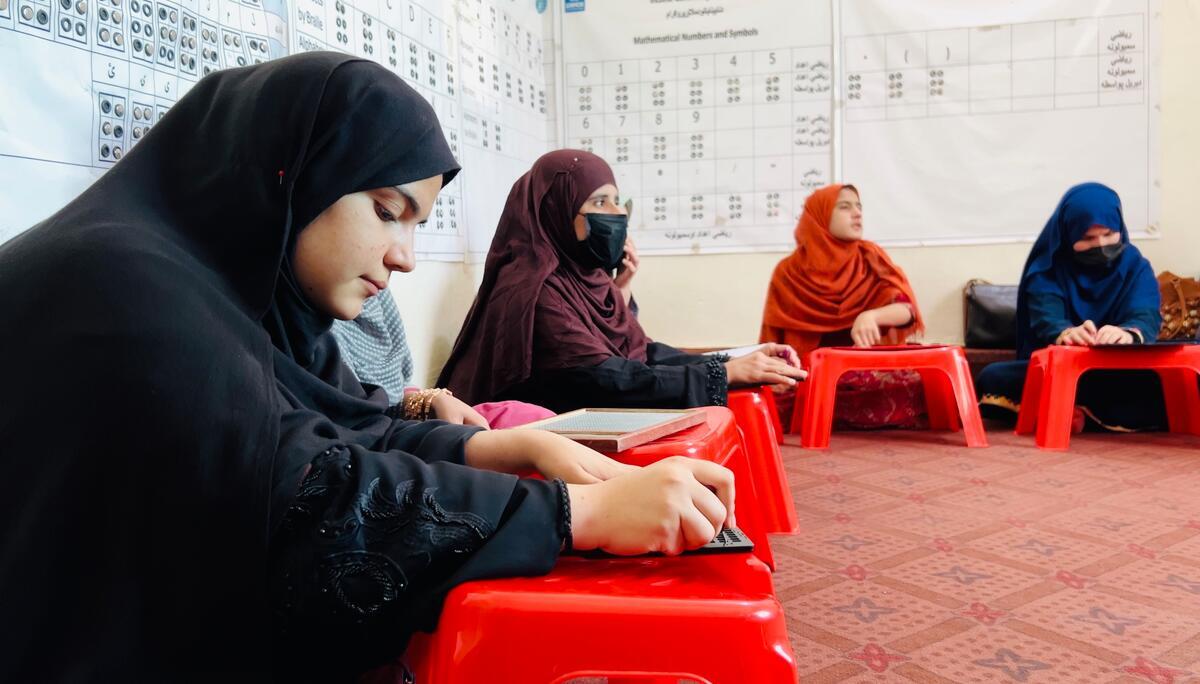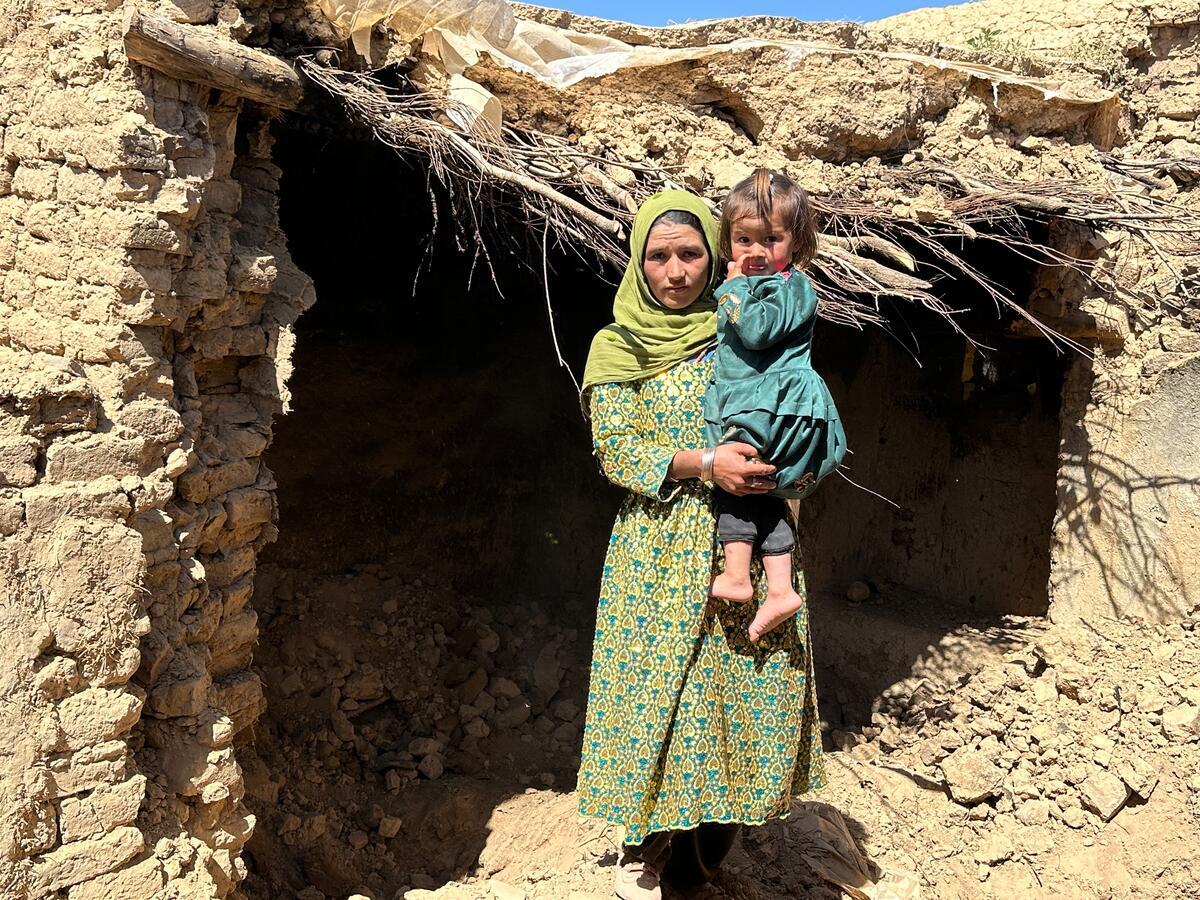Afghanistan Humanitarian Update No. 68
Afghanistan Humanitarian Update No. 68
15 August 2003
More than 2.3 million returnees since 2001
Some 390,000 Afghans have returned home so far this year - including more than 55,000 who repatriated spontaneously from Iran. With several more months left in the repatriation season, Afghanistan was set to see one of the largest repatriations in 11 years - second only to the return of 1.8 million refugees who went back in 2002.
In all, more than 2.3 million Afghan refugees have gone home since 2001 under the joint UNHCR/Afghan government programme, leaving a similar number of refugees estimated by UNHCR in neighbouring Pakistan and Iran. The UN refugee agency does not promote repatriation due to the lack of security in some areas of Afghanistan, as well as the country's dependence on food and other humanitarian aid, but it aids those who wish to return.
More than a quarter million refugees have left Pakistan so far this year, while more than 136,000 have left Iran. Another 440 Afghans have gone back from 14 other countries with UN help, with return countries as distant as Brazil, Malaysia and Cambodia.
During the first half of the year, 45 percent of the returning refugees headed to central Afghanistan, slightly more than the combined number returning to northern and eastern Afghanistan (22 percent and 21 percent respectively). Of the other regions, six percent of returnees went to southern provinces, four percent to western Afghanistan, and two percent to the south-eastern border belt.
Kabul Province, including the fertile Shomali Plain, was the main destination for returnees, receiving 36 percent of all refugees so far this year. Eastern Afghanistan's Nangarhar Province absorbed 18 percent, while Baghlan Province took in seven percent of the returnees during the first half of 2003.
So far this year, UNHCR has distributed more than 57,000 kits containing basic assistance items to returning refugees arriving at its encashment/distribution centres throughout Afghanistan. Among the items distributed to date include more than 78,000 plastic tarpaulins, 124 metric tons of soap, and 80,000 metres of hygienic cloth. The UN World Food Programme (WFP) has distributed more than 6,000 metric tons of wheat to returning families to cushion their return.
By the end of July, UNHCR had contracted with non-governmental organisations (NGOs) to help Afghans construct more than 41,000 shelters, of which half were under construction or completed. For Afghans heading to the capital, the Minister of Urban Housing and Development said in July that half the 20,000 low-cost housing units planned for Kabul would be set aside for returnees.
Insecurity affects some regions
The success of the massive repatriation has been marred by a spate of attacks that have killed aid workers and scores of other Afghans, hindering the delivery of relief aid to some areas of the country.
UNHCR itself temporarily closed its office in eastern Afghanistan's Kunar Province earlier this week. The closure followed a rocket attack on Sunday in which a missile landed less than 400 metres from the organisation's field office in Asadabad, the provincial capital. The eight UNHCR staff were redeployed elsewhere in the region.
A bomb destroyed a packed minibus in southern Afghanistan's Hilmand Province on Wednesday, killing 15. Meanwhile, in Ghazni Province, two Afghan Red Crescent workers were killed and three wounded when gunmen fired on their vehicles as they returned from delivering aid in neighbouring Paktika Province. Scores of other Afghan civilians and some fighters were reportedly killed in separate incidents elsewhere in the country.
Relief agency personnel have apparently been targeted in some of the recent attacks. A staff member with the NGO Mercy Corps was killed in Deshu District, Hilmand Province on 7 August when the government compound where he was sleeping was attacked. Six other Afghans were murdered in that incident. Two days before, 10 Afghan workers with the local NGO Coordination Humanitarian Assistance were severely beaten by gunmen who raided their compound in Maiwand District of Kandahar Province.
Relief assistance and security often come hand in hand. Afghanistan's economic and social problems are very much linked to insecurity in some rural areas where needs are greatest, but also where aid workers face serious security problems.
Aside from suspending operations in Kunar Province, UN refugee agency staff operating in southern and south-eastern provinces must observe strict security guidelines following numerous security incidents over the last year. The UN refugee agency maintains 31 offices throughout Afghanistan, with 782 staff, including 87 expatriate aid workers.
Number of displaced persons reduced
Afghanistan's population of internally displaced persons (IDPs) stands at some 210,000 following the return to home areas or local integration by others, surveys indicate. Ample rainfall during 2003 in many areas helped some IDPs to be able to go back to their communities. This year Afghanistan should harvest its largest wheat crop in 20 years, authorities estimate, helping to reduce the country's hunger gap and providing much-needed employment.
An important reduction in the number of IDPs has been seen in western Afghanistan's Herat Province, where the number of Afghans residing in makeshift camps has dropped by two-thirds since the end of 2002, from nearly 60,000 to less than 20,000.
So far this year, more than 26,000 IDPs have gone home from the Herat region's Maslakh camp, 12,300 from Shaidayee camp and 1,700 from Minaret camp aboard 45 convoys organised by UNHCR and the International Organization for Migration. The main destinations have been Herat (21,811 individuals) and Badghis (15,952) provinces.
Parched southern Afghanistan, still suffering the effects of a record drought, hosts an estimated 115,000 IDPs, including more than 17,000 assisted at the Zhare Dasht temporary settlement near Kandahar. Western areas shelter 38,000 IDPs and central areas host 16,000. Eastern and south-east Afghanistan count some 5,000 and 4,000 IDPs respectively.
UNHCR assistance in returnee areas
This year UNHCR is using more national NGOs than ever before as implementing partners in Afghanistan. Over 2002, most local NGOs still operated under the umbrella of international organisations. Out of some 100 sub-agreements signed by UNHCR last year, fewer than 20 were with national aid agencies. In the first six months of 2003, the refugee agency has signed 27 sub-agreements with local NGOs, 16 with government offices, and the balance (47) with international agencies.
Among the UNHCR-financed activities underway nationwide are 2,840 wells and water points, including 1,011 dug wells, 1,003 tube wells and 24 water piping schemes. Another 298 existing wells are being deepened. Sanitation assistance includes the construction of 3,276 baths, of which 337 were completed by the end of July, and 14,940 latrines. UNHCR's partners have also completed seven irrigation projects in eastern Afghanistan.
The UN refugee agency has so far received $115 million from its donors; UNHCR's 2003 budget amounts to $185 million to assist Afghan returnees and refugees in neighbouring countries.


